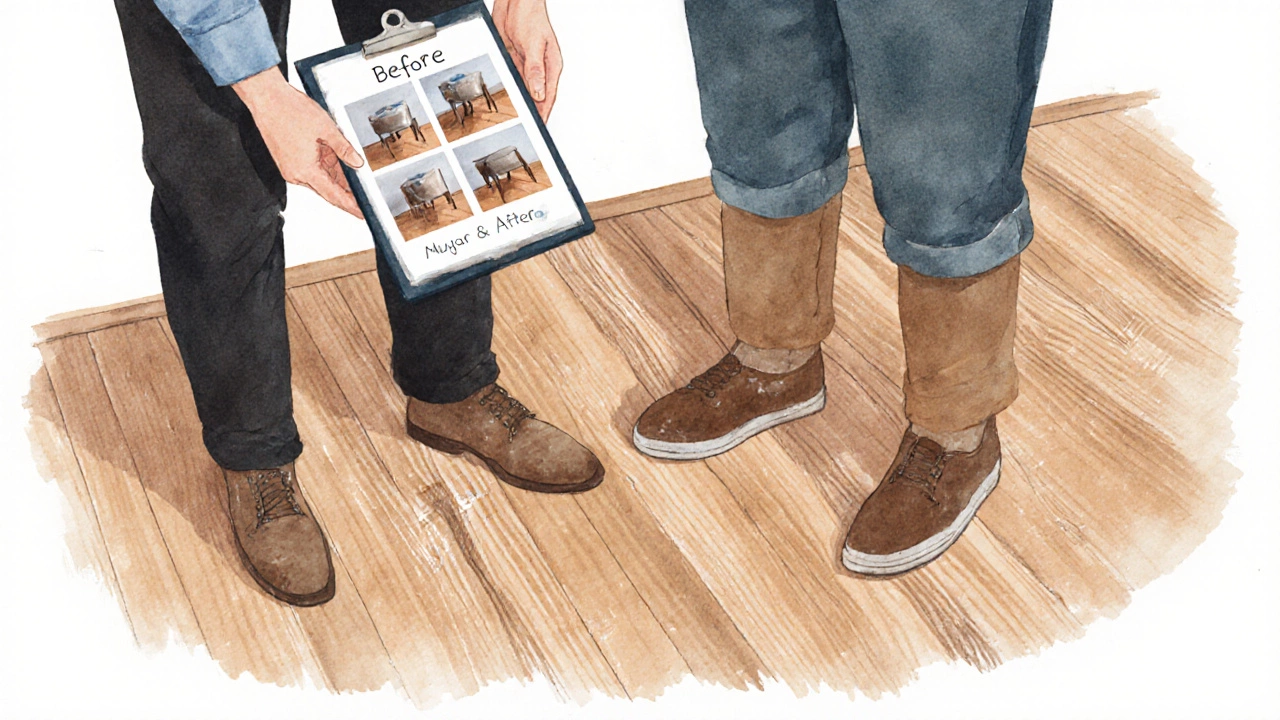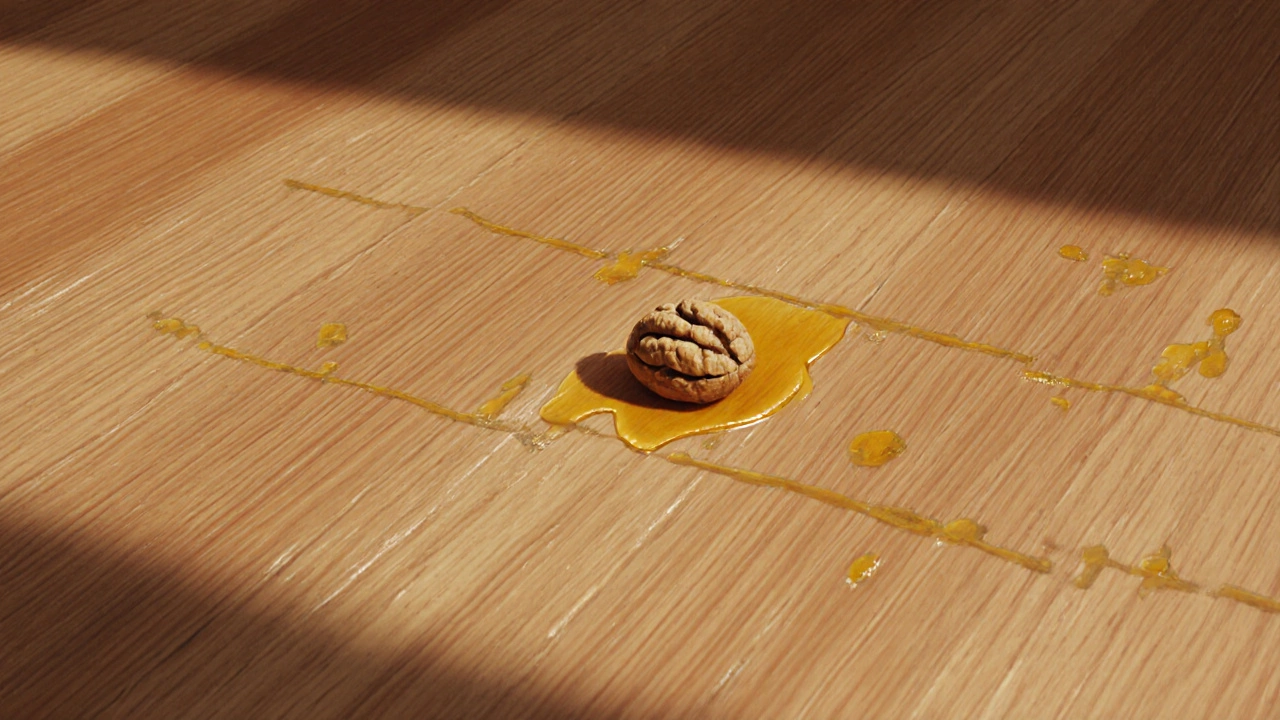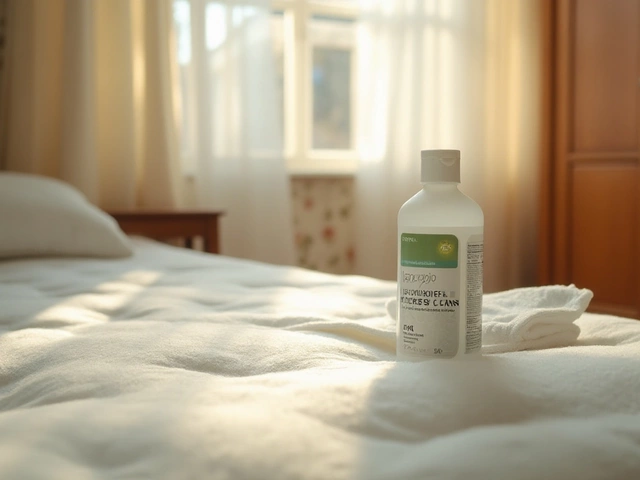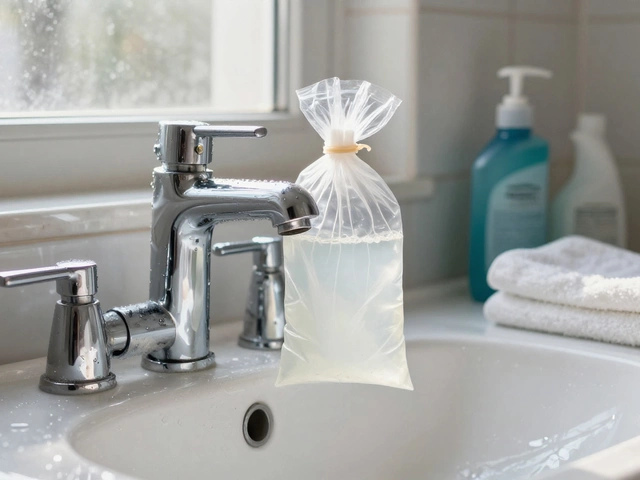Wood Floor Scratches Assessment Tool
Assess Your Floor Condition
Use this tool to determine if your wood floor scratches are considered normal wear and tear or damage when moving out.
When you’re moving out of a rented home, one of the biggest worries isn’t the dust or the grime-it’s the scratches on the wood floors. You remember how careful you were. You used felt pads on furniture. You never wore high heels indoors. But now, as the landlord walks through with a clipboard, those tiny scuffs and lines suddenly feel like crimes. Are they really your fault? Or are they just part of living in a home?
What Counts as Normal Wear and Tear?
Normal wear and tear isn’t a legal term you find in a contract. It’s a common understanding built over decades of renting. In the UK, it’s defined by the Tenant Fees Act 2019 and supported by guidance from the government and housing tribunals. It means damage that happens naturally over time from regular, reasonable use-not from neglect or abuse.
On wood floors, normal wear includes:
- Light surface scratches from foot traffic, especially near doorways
- Faint scuff marks from shoes or pet claws
- Subtle fading in areas exposed to sunlight
- Minor dulling of the finish from daily cleaning
These aren’t mistakes. They’re signs that people lived there. A 2023 study by the UK Housing Federation found that 87% of landlords accepted minor floor scratches as normal wear when tenants moved out-especially in homes rented for more than two years.
What’s Considered Damage?
Not all marks are created equal. There’s a clear line between everyday use and damage that goes beyond what’s reasonable.
Damage includes:
- Deep gouges from dragging heavy furniture without sliders
- Chips or cracks in the wood planks
- Stains from spilled liquids left uncleaned for days
- Large areas of finish worn away, exposing raw wood
- Scratches from pets with untrimmed nails that run across the entire room
These aren’t just unsightly-they’re repairable. And if you caused them, you could be charged. Landlords can’t deduct for normal wear, but they can for repairs needed because of tenant negligence.
How Do Landlords Decide?
It’s not about perfection. It’s about context.
Landlords and letting agents look at three things:
- How long you lived there - A few light scratches after six months? Probably normal. The same scratches after five years? Still normal. But if the floor looked brand new at move-in and now has deep grooves after just one year, that raises questions.
- What the condition was at move-in - Did the inventory report show existing scratches? If yes, those aren’t yours. Always take photos on day one. Many tenants in Bath have won disputes just because they had clear before-and-after pictures.
- Where the damage is located - Scratches along a high-traffic path from the kitchen to the living room? Expected. A deep scratch right in the middle of the living room floor where no furniture was moved? That needs explaining.
Landlords can’t charge for repainting walls because of normal fading, and they can’t charge for floor scratches that match the home’s age and use. But they can charge for replacing a whole plank if you dropped a heavy piano on it.

What Should Tenants Do Before Moving Out?
You don’t need to make the floor look like new. But you do need to make it look respected.
Here’s what works:
- Deep clean the floors - Use a microfiber mop with a wood-safe cleaner. Avoid vinegar or steam cleaners-they can damage the finish over time.
- Fill minor scratches - Use a wood filler pen that matches your floor’s colour. They cost under £5 and work wonders on surface marks. Rub it in, wipe off the excess, and buff lightly.
- Polish lightly - A wood floor polish or conditioner can revive dull areas and make minor scratches less obvious. Don’t overdo it-just a thin, even coat.
- Document everything - Take clear, well-lit photos of the floors before you leave. Include wide shots and close-ups of any marks. Keep these with your move-out checklist.
One tenant in Bath spent two hours on a £6 wood touch-up pen and saved £300 in deposit deductions. It wasn’t about perfection. It was about showing effort.
What If the Landlord Says It’s Damage?
Disputes happen. But you have rights.
If your landlord claims scratches are damage and withholds part of your deposit:
- Request a written explanation
- Compare their claim to your move-in photos
- Check the inventory report
- Use the government’s free deposit protection service (TDS, DPS, or MyDeposits)
Most disputes are resolved without going to court. In fact, 72% of deposit disputes in England and Wales in 2024 were settled in the tenant’s favour when they had good documentation.
Don’t panic. Don’t argue. Just respond calmly with evidence. Landlords know the law. If they try to charge for normal wear, they risk losing more than just the deposit-they risk a penalty from the deposit scheme.

Can You Fix Scratches Yourself?
Yes-and you should. But only if it’s practical.
For surface scratches:
- Use a walnut or pecan nut. Rub it over the scratch. The natural oils and colour will blend in.
- Try a beeswax stick designed for wood floors. Melt it slightly with a hairdryer, press into the scratch, then wipe clean.
- For wider scratches, use a wood filler stick from B&Q or Homebase. Choose the closest shade to your floor.
For deep scratches or missing wood:
- Don’t attempt a DIY fix. You’ll make it worse.
- Leave it to the landlord. They’re responsible for structural repairs.
- But if you caused it, offer to pay for a professional repair-sometimes a single plank replacement costs less than £100.
Fixing small issues yourself shows responsibility. It also removes the landlord’s excuse to charge you.
Why This Matters for End of Tenancy Cleaning
End of tenancy cleaning isn’t just about scrubbing the kitchen or cleaning the windows. It’s about presenting the home as you found it-minus the dirt, plus the care.
Wood floors are one of the first things landlords notice. If they look neglected, they assume the rest was too. But if the floors are clean, lightly polished, and minor scratches are touched up, you send a message: I respected this home.
That’s not just about getting your deposit back. It’s about leaving with your reputation intact. Landlords remember tenants who left things in good shape. They’re more likely to give a good reference. And that matters when you’re applying for your next rental.
Final Tip: Think Like a Landlord
Landlords aren’t trying to cheat you. Most are just trying to protect their investment. They’ve seen tenants who treated homes like disposable rentals. They’ve paid for repairs that shouldn’t have been needed.
But they’ve also seen tenants who cleaned, repaired small things, and left the place better than they found it. Those tenants get their deposit back quickly. And they get referrals.
So ask yourself: If I owned this house, would I charge someone for these scratches? If the answer is no, you’re probably in the clear. If the answer is yes, fix it before you walk out.
Wood floors tell stories. The right scratches? They’re part of the story of a home lived in. The wrong ones? They’re the ones you can easily prevent-or fix.
Are scratches on wood floors always my fault as a tenant?
No. Light surface scratches from normal foot traffic, pet movement, or furniture being moved are considered normal wear and tear. You’re only responsible for damage caused by negligence, like dragging heavy items without protection or leaving spills uncleaned for days.
Can a landlord deduct money from my deposit for wood floor scratches?
Only if the scratches are beyond normal wear and tear. Landlords must prove the damage was caused by you and that it’s not just aging or use. They must also provide receipts for repairs. If they can’t, you can dispute the deduction through your deposit protection scheme.
How do I prove scratches were there before I moved in?
Take clear, dated photos on your move-in day, especially of the floors. Match them to the inventory report. If the report mentions scratches or wear, keep a copy. These are your strongest evidence if a dispute arises.
What’s the best way to clean wood floors before moving out?
Use a microfiber mop with a pH-neutral wood floor cleaner. Avoid vinegar, steam cleaners, or excessive water. Sweep or vacuum first to remove grit. A light polish with a wood conditioner can restore shine without damaging the finish.
Do I need to refinish the whole floor before leaving?
No. Refinishing is a major repair and not expected from tenants. Focus on cleaning and touching up small scratches with a wood filler pen or beeswax. Full refinishing is the landlord’s responsibility unless you caused major damage.





